boyaca,guayaquil,guayas,Ecuador Ecuador
Personne à contacter Mr. bananas
Nom de la société boyaca, guayaquil, guayas, Ecuador
Contacter maintenant Noter cette société Rapporter une fraude / un spam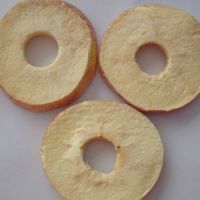 Freeze Dried Apple Ring
Freeze Dried Apple Ring
 Freeze Dried Apricot Dice
Freeze Dried Apricot Dice
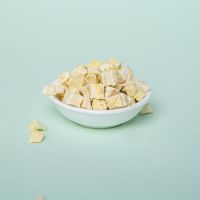 Freeze Dried Banana Chips
Freeze Dried Banana Chips
 Arabica green coffee bean
Arabica green coffee bean
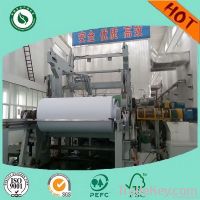 Art Paper
Art Paper
 BANANA CHIPS - 100% NATURAL FRUIT - CRISP BANANA CHIPS - HIGH QUALITY - GOOD PRICE FROM VIETNAM
BANANA CHIPS - 100% NATURAL FRUIT - CRISP BANANA CHIPS - HIGH QUALITY - GOOD PRICE FROM VIETNAM
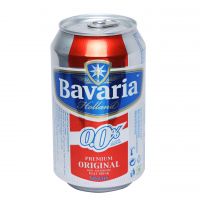 Beer non alcoholic 0, 33L
Beer non alcoholic 0, 33L
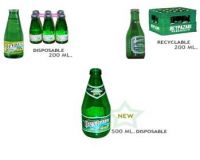 Beypazari Mineral water
Beypazari Mineral water
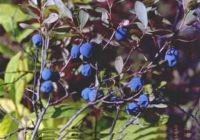 Bilberry Extract
Bilberry Extract
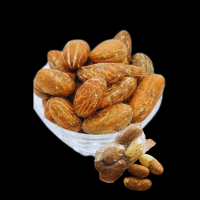 Bitter Kola
Bitter Kola
Bananas Quality HARVEST HARVEST TIME: This is a fundamental aspect of the process since it determines, to a great extent, the characteristics of the final product. Because the banana is a climacteric fruit its harvest time is defined in relation to the age of the fruit, a minimum of nine weeks, and its development, which is established in relation to the necessities of the market destination. GATHERING: During this phase we make the first selection of the fruit since the bunches are gathered and classified according to age and grade, with an appropriate control of the cutting method and the provision of the necessary accessories for harvesting, as well as the treatment that is to be given the bunches in order to avoid mechanical damage to the fruit. POST-HARVEST HANDLING AND PREPARATION OF THE PRODUCT After the bunches of bananas are gathered they are shipped to the packing plant as quickly as possible. During this process we take great care to avoid mishandling, bruising or rubbing of the fruit. Once it arrives at the packing plant the fruit undergoes several processes in order to be prepared for its later shipment, commercialization and consumption. It is given added value when its presentation is improved, and it is formally classified according to its characteristics. At the same time an effort is made to increase its shelf life and to guard it from mechanical damage, contamination and the spread of diseases. The process of preparation begins when the bunches of bananas arrive at the packing plant and go through the successive stages of reception and pre-selection , dehanding, selection, cleaning and cutting of hands or clusters, latex cleansing, classification, weighing, fumigation of the crowns, labeling, packing and casing which are described below. RECEPTION AND PRE-SELECTION: This consists of the arrival of the bunches at the packing plant where we pre-select them according to the condition of the fruit they are made up of, taking into consideration the deflowering, size and general aspect of the hands and fruits. The objective is to identify and then separate the bananas that fulfill the requirements of size, grade and appearance which characterize our fruits of maximum quality from those that do not fulfill these specifications. STRIPPING AND SELECTION: This is where the hands which make up the bunch are separated from the stalk. This is done by cutting them with a stripping shovel, which leaves the fibrous tissue on the hands that are separated. At the same time the first selection is made. This is determined by the aspect of the fruits that make up the hands. In this stage the principal aspects to be considered are grade, shape, size, and homogeneity in appearance. CHARACTERISTICS Shape: It is oblong in its length and somewhat curved. Size and weight: The weight of the male plantain is superior. It can weigh anywhere from **0 grams and up per unit. The baby plantain is much smaller than the rest of the other species, and its weight ranges from **0 to **0 grams Color : According to the variety, the skin may be greenish yellow, yellow, reddish yellow or red. The male plantain has a thick greenish skin, and its pulp is white. In the baby plantain the pulp is an ivory color, and the skin is thin and yellow. Flavor: The plantain and the baby plantain are characterized by their intense, fragrant and sweet taste In the male plantain the pulp has a starchy consistency and its flavor , that which distinguishes it from the rest of the plantains to be eaten raw, is not sweet since it has only a few simple carbohydrates. Bananas can be harvested year round and are more or less abundant according to the season. They are cut when they have reached full maturity and begin to yellow. Frequently, and especially in winter, the harvest is taken early and the fruits are left to ripen by hanging them in a closed, warm and dry locker and keeping them in the dark. They are boxed in cardboard containers with a weight of *0 kilograms each. The shipment of the fruit is done in vehicles refrigerated at a temperature of *4 degrees Centigrade. HOW TO SELECT AND KEEP THEM They must always be whole, without bumps or bruises. In the plantain and the baby plantain, which are eaten raw, the color is indicative of the ripeness of the fruit. Pieces of the fruit that are excessively soft should be rejected. The presence of back spots or stains on the skin does not affect the quality of the piece. This fruit does not require special conditions for storage. All that is necessary is to keep them in a cool, dry place that does not receive direct sunlight. If they are kept in a locker, the plantain skin darkens which alters its external appearance but does not affect its nutritional value in any way. The darkening of the skin can be avoided by wrapping the fruit in newspaper. Bananas can be frozen and kept for some two months. Furthermore, the baby plantains are better kept in bunches and not as individual pieces of fruit and should be eaten as soon as possible once they have ripened. EXPORT QUALITY PRESENTATION OF THE PLANTAIN FOR EXPORT The plantain for export can not have splitting in its peel, signs of wilting, bruises, excessive scarring or broken ends. Small scars caused by insects or fruit stains are acceptable, but not those produced by reason of mechanical mishandling (harvesting, shipment, etc.) The color requirement varies according to the final market destination and the use to be given the fruit. For example, in the United Kingdom the plantain must arrive at the wholesale market with a bright green color, while in Holland the plantain that arrives in a more advanced stage of ripening is appreciated ( a yellowish green color). THE POINT OF RIPENING The point of ripening for the harvest time of the plantain for export depends on the product that is demanded. For this reason the type of plantain that is required for the United Kingdom must be harvested bright green in the pre climacteric condition, while the fruit destined for Holland can be harvested when the peel has a less bright green color. In general a minimum degree of ripening is required indicated by a "three quarter light" color and a size of *2 cms. per unit. The plantain in this state presents angular pieces of fruit with distinct borders. As the fruit ripens on the plant the pieces, or "fingers", take on a less angular and more rounded form (the same for the baby plantain). It is very important that this minimum degree of ripening be observed because the final stage of ripening depends on the original physiological ripening. It is recommended to harvest the plantain either the day before or the same day of shipment. To prevent diseases in the crown it is recommended to soak the crown in a solution of 0.*5% thiabendazol. SIZE AND WEIGHT PER UNIT PIECE Each plantain (unit piece) for export may measure between *2 an *0 cms. in length and 2 to 5 cms. in width. Its weight ranges between **0 and **0 gms. One bunch must have a minimum of 4 unit pieces. A stalk weighs around *8 kgs. Approximately 1.4 stalk per box are packed.
Contacter maintenant| Type d'entreprise | Trading |
| Site web | http://www.product-quality.blogspot.com/ |
| Année de création | 1960 |
| Number of Employees | 26-50 |
| Marchés principaux | Americas,Africa,Asia,Caribbean,America,Europe,Middle East,Oceania,Worldwide |
| Produits / services de la société | bananas pineaples, plantains mangoes, yuca |
| Emplacement d'usine | Ecuador |
| Taille d'usine | 1000 sqm to 3000 sqm |
| Nombre de lignes de production | 3 |
| Volume total des achats annuels | Less than 1 Million USD |
| Nb de personnel de R & D | Less than 5 people |
| Contrôle de la qualité | In House |
| Certificat | SGS |
| Fabrication à façon | OEM Service Offered ,Buyer Label Offered |
| Capital enregistré | Less than 1 Million USD |
| Ownership Type | Professional Association |
| Représentant / Directeur juridique | ing jose romer |
| Pourcentage d'exportation | 45% |
| Volume total des ventes annuelles | Less than 1 Million USD |
| Nb de personnel QC | Less than 5 people |
| Personne à contacter | Mr. bananas |
| Société | Product Fresh |
| Téléphone | ******** |
| Portable | ******** |
| Fax | ******** |